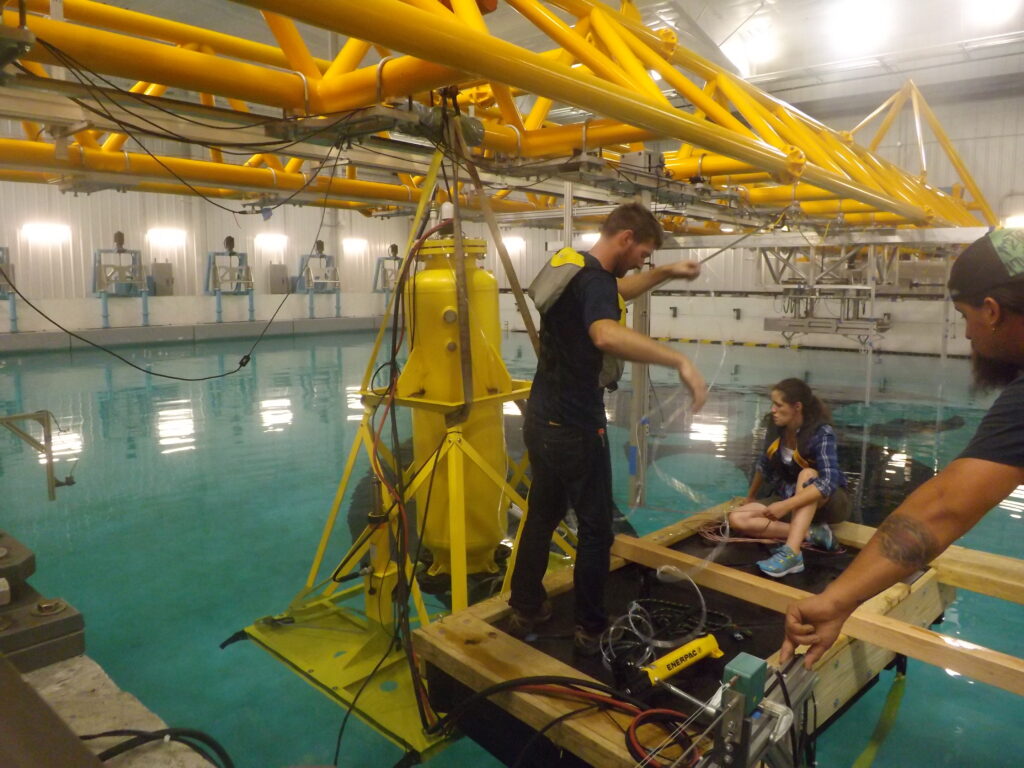


Following the semi-final 1:50 scale trials and numerous technical submissions, team Waveswing America was selected as one of only 9 teams to progress to the finals of the wave energy prize.
The requirements of the finals were to build a 1:20 scale model and submit this for testing at the US Navy’s large ocean test basin at Carderock, MD.
The team attended Carderock in August 2016 where we were allowed one week to assemble and pre-commission the model in the ‘parking lot’ before moving into the basin itself. Once in the basin we successfully tested our model which included a full linear generator PTO and advanced control system.
The picture on the left shows the anchor frame and air reservoir portion of the device. The reservoir is only required at model scale to compensate for air comprehensibility effects.
A key feature of the Waveswing is the dynamic response to waves across a wide range of sizes and periods. This is due to the fact that the device responds to pressure caused by passing waves rather than the inertia (diffraction) effects.
When this feature is combined with a direct drive PTO and smart control software, very high levels of power capture are possible, even with a small device in long wave-lengths. This results in best-in-class volume utilisation and hence lower costs.


The first stage of the competition involved 1:50 scale model testing which The Wave Energy Prize sponsored by the U.S. Department of Energy is a competition in which the objective is to double the economic performance of wave energy converters from a current baseline of 1.5m of effective capture width per $million of structure cost.
When the competition was announced we believed that both the AWS-III and the Waveswing were capable of achieving the objective so we teamed up with American partners to enter two teams. Surprisingly both teams were successful in reaching the semi-finals (from an initial field of 92 entrants).
After much soul-searching we decided to withdraw the AWS-III bid and to focus resources on team Waveswing America! The 1:50 model was challenging due to the small scale and the requirement to provide accurate measurement of both dynamic and kinematic components of power. We made extensive use of 3D printing and acrylic tube and produced an excellent model. The PTO used was a minature glass cylinder damper with graphite piston and precision air-jet control.
The second stage in the competition involved a larger 1:20 scale model with full reactive control. We returned to Iowa in June to test and shake-down the model before packing it up to go to Carderock for the final testing.